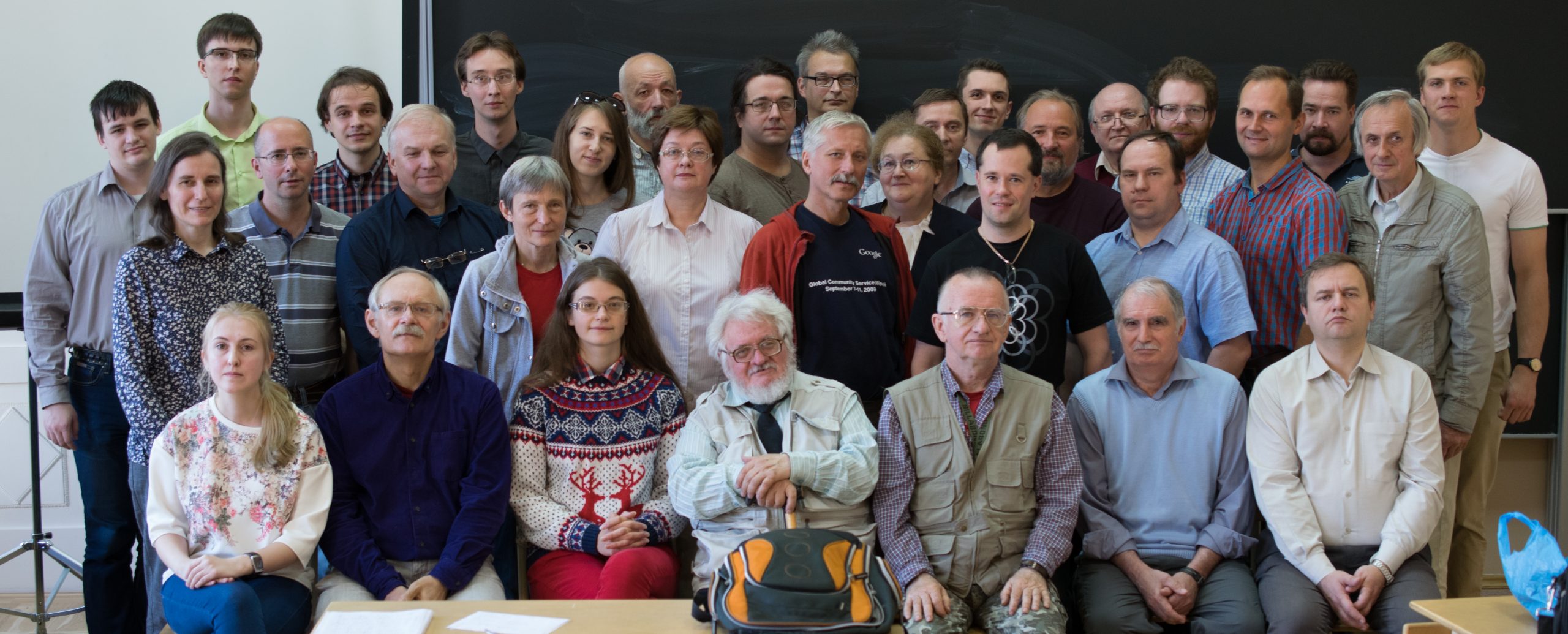Профессор университета Ренн, Франция.
Ведущий научный сотрудник кафедры высшей математики и математической физики СПбГУ.
e-mail: dimitri.yafaev@univ-rennes1.fr
Подробный CV (Francais), Краткий CV (English)
Научные интересы
- Спектральная теория дифференциальных операторов
- Математическая теория рассеяния
Недавние публикации
- High energy and smoothness asymptotic expansion of the scattering amplitude.
We find an explicit expression for the kernel of the scattering matrix for the Schrodinger operator containing at high energies all terms of power order. It turns out that the same expression gives a complete description of the diagonal singularities of the kernel in the angular variables. The formula obtained is in some sense universal since it applies both to short- and long-range electric as well as magnetic potentials. - A particle in a magnetic field of an infinite rectilinear current.
We consider the Schrodinger operator \({\bf H}=(i\nabla+A)^2\) in the space \(L_2({\Bbb R}^3)\) with a magnetic potential \(A\) created by an infinite rectilinear current and perform its spectral analysis almost explicitly. In particular, we show that the operator \({\bf H}\) is absolutely continuous, its spectrum has infinite multiplicity and coincides with the positive half-axis. Then we find the large-time behavior of solutions \(\exp(-i{\bf H}t)f\) of the time dependent Schrodinger equation. Our main observation is that a quantum particle has always a preferable (depending on its charge) direction of propagation along the current. Similar result is true in classical mechanics. - A trace formula for the Dirac operator.
Our goal is to extend the theory of the spectral shift function to the case where only the difference of some powers of the resolvents of self-adjoint operators belongs to the trace class. As an example, a pair of Dirac operators is considered. - Scattering by magnetic fields.
Consider the scattering amplitude \(s(\omega,\omega^\prime;\lambda)\), \(\omega,\omega^\prime\in{\Bbb S}^{d-1}\), \(\lambda > 0\), corresponding to an arbitrary short-range magnetic field \(B(x)\), \(x\in{\Bbb R}^d\). This is a smooth function of \(\omega\) and \(\omega^\prime\) away from the diagonal \(\omega=\omega^\prime\) but it may be singular on the diagonal. If \(d=2\), then the singular part of the scattering amplitude (for example, in the transversal gauge) is a linear combination of the Dirac \(\delta\)-function and of a singular denominator. Such structure is typical for long-range magnetic scattering. We refer to this phenomenon as to the long-range Aharonov-Bohm effect. On the contrary, for \(d=3\) scattering is essentially of short-range nature although, for example, the magnetic potential \(A^{(tr)}(x)\) such that \({\rm curl}\,A^{(tr)}(x)=B(x)\) and \(\langle A^{(tr)}(x),x\rangle=0\) decays at infinity as \(|x|^{-1}\) only. To be more precise, we show that, up to the diagonal Dirac function (times an explicit function of \(\omega\)), the scattering amplitude has only a weak singularity in the forward direction \(\omega = \omega^\prime\). Our approach relies on a construction in the dimension \(d=3\) of a short-range magnetic potential \(A (x)\) corresponding to a given short-range magnetic field \(B(x)\). - On Inverse Scattering at a Fixed Energy for Potentials with a Regular Behaviour at Infinity (with Ricardo Weder).
We study the inverse scattering problem for electric potentials and magnetic fields in \({\Bbb R}^d, d\geq 3\), that are asymptotic sums of homogeneous terms at infinity. The main result is that all these terms can be uniquely reconstructed from the singularities in the forward direction of the scattering amplitude at some positive energy. - Lectures on scattering theory (given by the author at the Australian National University in October and November, 2001).
The first two lectures are devoted to describing the basic concepts of scattering theory in a very compressed way. The last two lectures are based on the recent research of the author.

